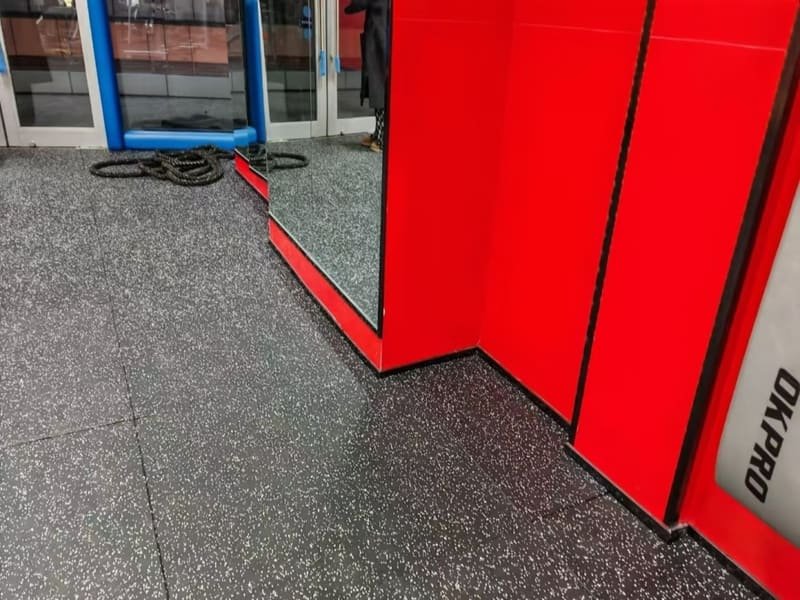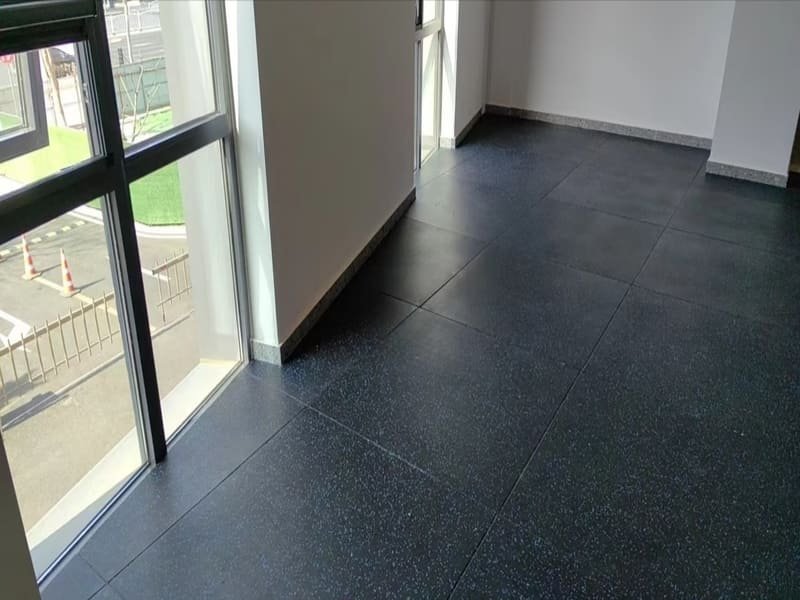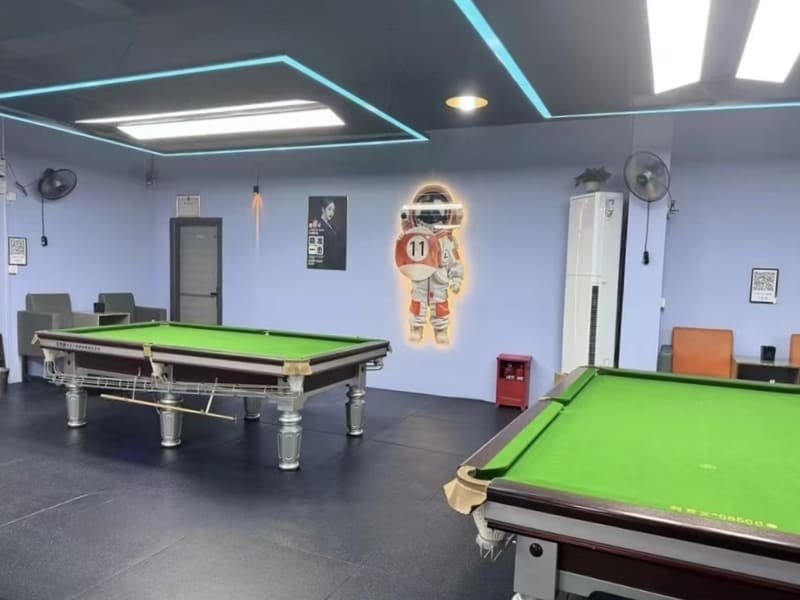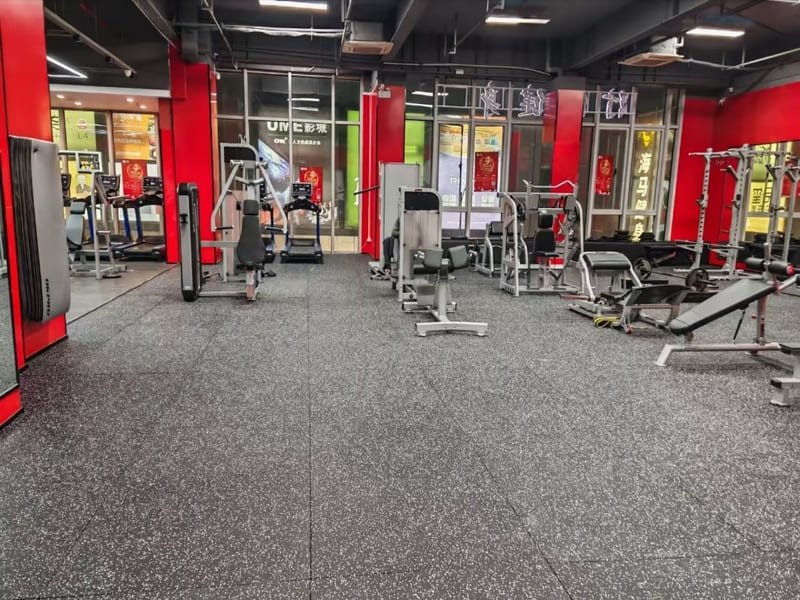The strong odor from new rubber mats comes from Volatile Organic Compounds (VOCs) released during a process called "off-gassing." The key is patience and systematic ventilation. I know this from engineering countless rubber formulations; the right process minimizes but cannot eliminate initial VOC release.
Why Do New Rubber Mats Smell, and How Does Manufacturing Affect It?
New rubber mats smell primarily due to the release of Volatile Organic Compounds (VOCs)—small organic chemical molecules that evaporate into the air. These VOCs are byproducts of the raw materials and the chemical processes, such as vulcanization, used to transform raw rubber into a durable, finished product. A properly managed curing phase in manufacturing is crucial to minimize these residues, but complete release requires time in a well-ventilated space—a process called off-gassing.
The Science Behind the Scent: VOCs and Off-Gassing
From an engineering standpoint, the smell is a direct result of residual chemicals that did not fully react or evaporate during the factory cure. The intensity depends heavily on the material formulation (e.g., natural rubber vs. various synthetic polymers like SBR or EPDM) and the quality of the thermal treatment. I focus on optimizing the time-temperature relationship during vulcanization to maximize cross-linking and minimize the remaining volatile content. For consumers, the best steps mimic factory ventilation:
| Manufacturing Factor | Impact on Odor Intensity | Consumer Mitigation Strategy | E-E-A-T Focus |
|---|---|---|---|
| Curing Time/Temperature | Shorter cure leads to higher residual VOCs and stronger smell. | Method 1: Prolonged air-out period (48-72+ hours). | Expertise (Technical Knowledge) |
| Material Formulation | SBR (Styrene-Butadiene Rubber) often off-gasses more than EPDM (Ethylene Propylene Diene Monomer). | Targeted absorption methods (Baking Soda/Charcoal) for persistent odors. | Experience (Practical Application) |
| Post-Manufacture Storage | Storing mats sealed in plastic traps VOCs, intensifying the smell upon opening. | Initial wash with mild soap to remove surface residues. | Trust (Safe Practices) |

The key is realizing that off-gassing is a natural material phase. Skipping the basic air-out step means you fight a scent battle you cannot win with just cleaning products. The simple truth: fresh air does most of the work.
What is the Most Effective Method for Eliminating Persistent Rubber Odor?
The most effective method is a three-step synergy: extended ventilation, deep cleansing with a neutralizing agent like white vinegar, and long-term absorption using baking soda or activated charcoal. You must not rush the first step; it is fundamental. After the initial off-gassing (which handles the bulk of VOCs), the cleaning and absorption steps tackle the remaining odor molecules trapped on the mat’s surface structure.
Practical Application of the Three-Step Odor Removal Protocol
When I consult on mat maintenance, I emphasize a structured approach. Just washing the mat is not enough. You must neutralize and absorb the molecules causing the odor. This process is often necessary for dense or thick mats, like heavy-duty gym flooring, where VOCs can remain trapped deep within the polymer structure.
1. Air Out the Mats: The Foundational Step (48-72+ Hours)
Place the mats flat in a dry, covered, and well-ventilated outdoor area. Crucially, avoid direct, intense sunlight, which degrades the polymer chains and reduces mat lifespan. The goal is maximum airflow over both surfaces. For large mats, I advise slightly propping up the edges to ensure air circulates underneath. This step releases the majority of the trapped VOCs.
2. Deep Cleanse: Neutralization with White Vinegar
White vinegar, a mild acid (acetic acid), is a superb natural deodorizer. It works by chemically neutralizing the alkaline or organic VOC molecules left on the surface.
| Action | Technical Detail | Rationale |
|---|---|---|
| Solution Mix | 1:1 or 1:2 ratio of White Vinegar to Warm Water. | Dilution prevents surface damage and excessive vinegar smell. |
| Application Time | Spray liberally; allow to sit for 15-30 minutes. | Allows enough time for the acetic acid to react with and neutralize the odor molecules. |
| Rinsing | Rinse completely with clean water (e.g., a hose). | Removes all residual cleaning agents and neutralized compounds to prevent a new, vinegar-like odor. |
3. Targeted Absorption: Baking Soda or Activated Charcoal
After cleaning, absorption traps the final remaining molecules. Baking soda (Sodium Bicarbonate) is a proven desiccant and odor absorber. Sprinkle it generously, brush it gently into the mat surface, and let it sit for 6-8 hours or overnight. Vacuum it thoroughly afterward. Alternatively, Activated Charcoal can be placed near the mat to absorb airborne VOCs in contained spaces (like a car cabin), providing ongoing odor control.

This comprehensive approach addresses the root cause (VOCs) through air and then eliminates surface residue through neutralization and absorption. It ensures the integrity of the mat while achieving lasting results.
Are Specific Mat Types More Prone to Odor, and How Should I Adjust My Cleaning?
Yes, thicker, denser mats, such as large commercial gym flooring or molded car mats, tend to retain VOCs longer due to reduced surface area relative to volume, requiring more aggressive or extended treatment. Thinner, more porous mats, like yoga mats, off-gas faster but are more susceptible to damage from harsh chemicals. Therefore, you must adjust the cleaning agent strength based on the mat’s application and material thickness.
Application-Specific Mat Care Protocols
My team and I often advise clients on maintenance based on the specific application of their custom mats. A high-density fitness mat requires a different care approach than a thin automotive liner.
Car Floor Mats
Focus: The enclosed environment of a car traps the odor, causing the upholstery to absorb the scent.
Adjustment: Clean the mats outside using the three-step protocol. Crucially, place activated charcoal inside the empty car cabin while the mats are airing out. This removes any odor already absorbed by the vehicle’s interior fabric, preventing the smell from immediately returning to the cleaned mats. Ensure the mats are bone-dry before reinstallation to prevent mold.
Yoga and Exercise Mats
Focus: These are often made from different, more flexible polymer blends and can be thinner. They are sensitive to strong acids or solvents.
Adjustment: Use a highly diluted vinegar solution (1:3 or milder) or a purpose-made, pH-neutral mat cleaner. Never soak or use abrasive brushes. Hang them completely straight to dry; folding or rolling while damp traps moisture and encourages microbial growth, which is a new odor problem altogether.
Large Gym or Industrial Mats
Focus: These mats are usually too heavy for transport and need in-place cleaning. They also require more time for VOC diffusion due to their thickness (often $>10$ mm density).
Adjustment: After the initial ventilation period, scrub with a commercial-grade, non-ammonia detergent or a strong soap and water solution. Use a hose for the rinse phase. During the critical drying phase, use specialized jacks or props to slightly lift the edges around the perimeter. This allows essential airflow to circulate beneath the mat, accelerating the off-gassing and preventing moisture lock-in which can lead to premature material failure.

Understanding the mat’s material and thickness guides the strength of your cleaning solution and the necessary drying time. This precision prevents material degradation and ensures the odor is eliminated completely, not just masked. Do not use bleach or ammonia; these chemicals irreversibly break down the rubber compound.
Conclusion
Removing the rubber smell from a new mat is a technical process of managed off-gassing and molecule neutralization. By implementing the robust three-step process—extended airing, neutralizing with vinegar, and thorough absorption—you ensure VOC elimination while preserving the material integrity.
My Requirements
If your current mat odor issues are persistent, or if you are developing a new product line and need material expertise to minimize off-gassing from the start, I can help.
Need a custom rubber mat solution engineered for minimal off-gassing and maximum durability? Contact my engineering team today for a free consultation or a customized material sample!

